The Fiat 500, an icon of automotive history, is more than just a car; it symbolises Italian ingenuity and timeless charm. Its story is one of resilience, innovation, and enduring appeal. The Fiat 500 has captivated car enthusiasts and casual drivers for over six decades, becoming a beloved fixture on roads worldwide, a testament to its enduring charm.
Our journey begins in Italy, renowned for its rich automotive heritage. In the post-war era, Italy needed a small, affordable, and practical car—something that could navigate the narrow streets of its historic cities and the winding roads of its countryside. Enter the Fiat 500, a vehicle that would meet and exceed these needs in ways that resonated with drivers globally.
Origins and Initial Development: 1936-1955 – Fiat 500 “Topolino”
Before the Fiat 500 became an icon, there was the Fiat 500 “Topolino.” Produced from 1936 to 1955, the Topolino was one of the world’s smallest cars at the time. The name “Topolino,” meaning “little mouse” in Italian, captured the car’s diminutive size and playful character.
The Topolino was born out of necessity when Europe grappled with economic challenges. Its design was a masterclass in efficiency—compact yet robust, simple yet innovative. It featured a 569 cc four-cylinder engine that delivered just enough power to make it a practical choice for daily use. Despite its modest specifications, the Topolino quickly gained a reputation for reliability and charm, becoming a common sight on Italian roads.
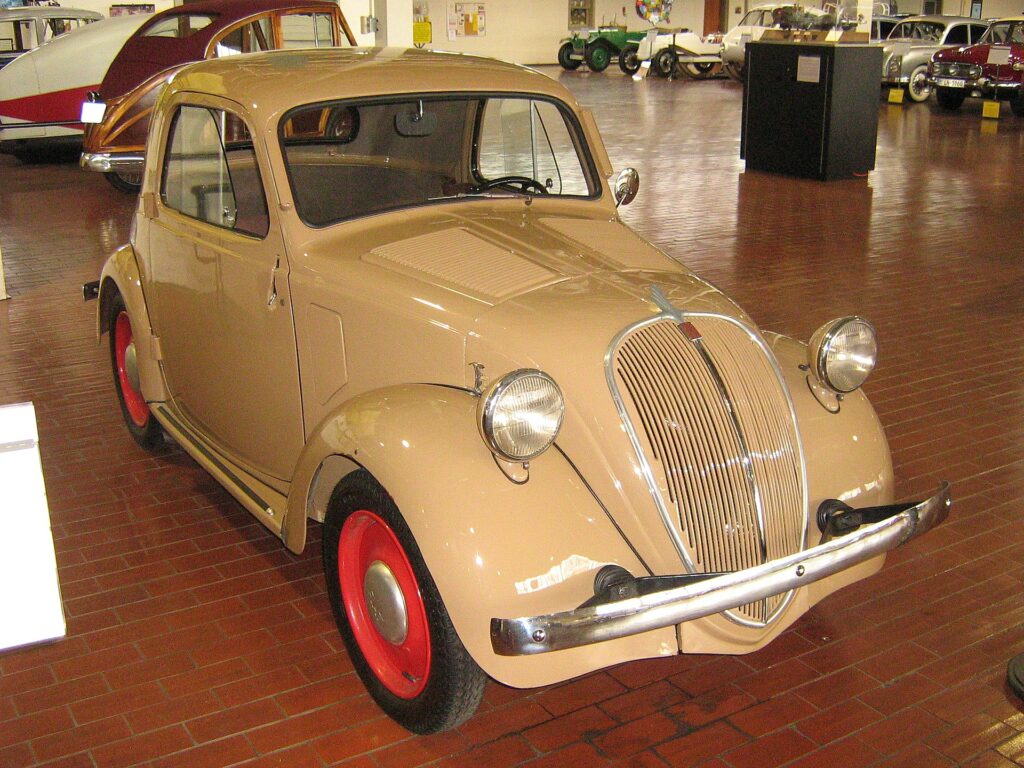
The Fiat 500, or the Topolino, was more than just a car; it was a beacon of hope and progress in a brutal era. It played a pivotal role in post-war recovery, providing mobility to the masses and allowing families and individuals to traverse distances previously unmanageable. The Topolino’s success laid the groundwork for what was to come, setting the stage for its successor, the Fiat Nuova 500.
The Birth of an Icon: Fiat Nuova 500
In 1957, Italy was a country amid a remarkable transformation. The scars of World War II were fading, and a period of economic growth and renewed optimism was beginning to take hold. In this context, Fiat introduced the Nuova 500, a car designed to bring affordable motoring to the masses and capture the spirit of a rejuvenated nation.
The Fiat Nuova 500, a marvel of engineering and design, was a game-changer in the automotive industry. Its compact, rear-engine layout was revolutionary for the time, offering an unprecedented level of space efficiency. Despite its tiny footprint, the 500 was cleverly designed to maximise interior space, making it a practical choice for urban drivers.
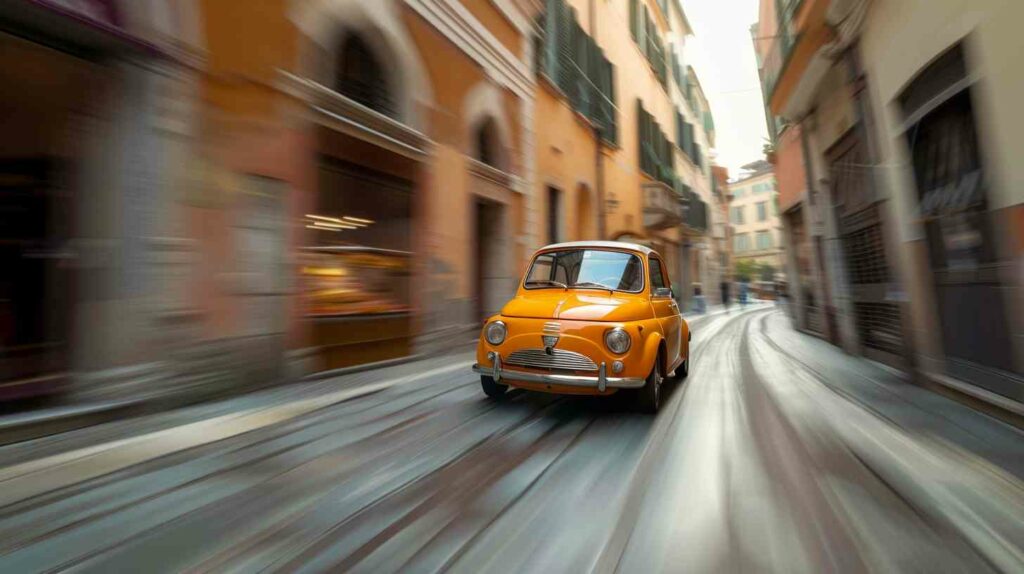
The Nuova 500 was powered by a 479 cc two-cylinder engine, producing a modest 13 horsepower. While these numbers might seem underwhelming by today’s standards, they were perfectly adequate for a car that weighed just over 500 kilograms. This lightweight construction made the 500 agile, fun to drive, and incredibly fuel-efficient—an essential attribute in an era when every litre of petrol counted.
The car’s design was simple and elegant, with clean lines and a cheerful, friendly face that endeared it to millions. Its affordability was a key selling point, but the 500’s character and charm truly captured the hearts of Italians. It quickly became a symbol of freedom and mobility, a car representing a new era’s possibilities.
In the bustling streets of Rome, Milan, and Turin, the Fiat 500 became a common sight. It zipped through traffic with ease and found parking spaces where larger cars could only dream. It wasn’t just a mode of transportation; it was a statement of style and practicality, embodying the very essence of Italian design.
Evolution and Models: 1957-1975
Early Models: 1957-1960
The initial release of the Fiat Nuova 500 in 1957 was met with great enthusiasm.. It came equipped with a 479 cc two-cylinder engine that delivered 13 horsepower to navigate Italy’s varied terrain. This early model set the tone for a beloved series of small cars.
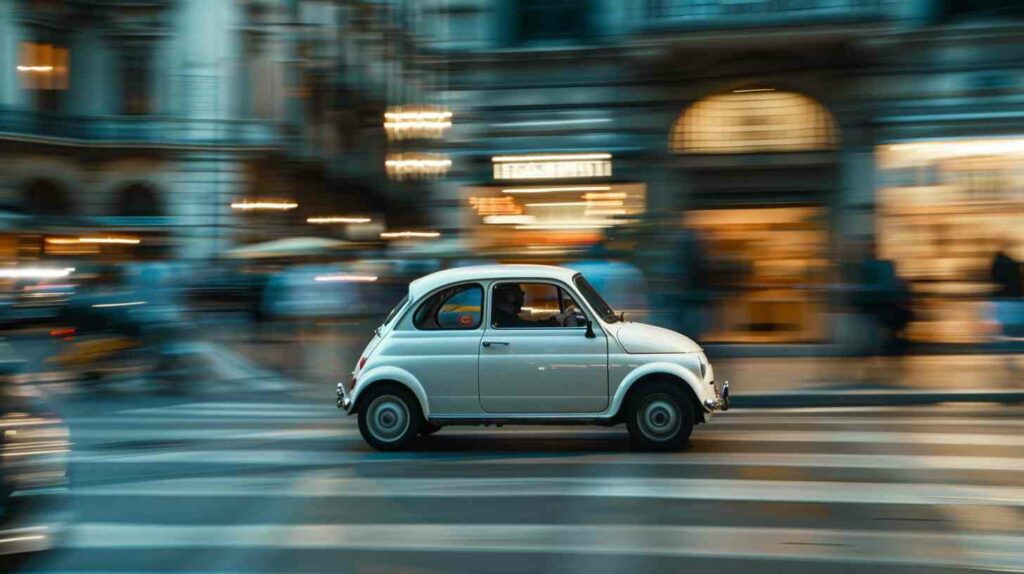
In 1958, Fiat introduced the Fiat 500 Sport, aimed at drivers seeking a bit more pep in their drive. This variant featured a more powerful engine, increasing performance while maintaining the car’s compact charm. It was a hit among younger drivers, and those who wanted their practicality served with excitement.
Major Developments: 1960s
The 1960s saw significant developments in the Fiat 500 range. In 1960, Fiat released the 500 D, with a slightly larger 499 cc engine. This upgrade provided more power and improved the car’s overall performance. The 500 D also featured a revised interior, enhancing comfort without compromising the car’s minimalist appeal.
By 1965, the Fiat 500 F was introduced, featuring front-hinged doors, replacing the earlier suicide doors. This change was more than just aesthetic; it improved safety and ease of access. The 500 F quickly became one of the most popular versions, known for its reliability and endearing style.
1968 Fiat launched the 500 L, a more luxurious car version. The 500 L boasted an upgraded interior with more refined materials, a redesigned dashboard, and additional chrome trim on the exterior. It was a nod to the increasing expectations of consumers who wanted their compact cars to offer a touch of elegance.
Fiat 500 R: 1972-1975
The final major iteration of the classic Fiat 500 came with the 500 R, introduced in 1972. This model featured a larger 594 cc engine, providing more power and smoother performance. It represented the pinnacle of the original Fiat 500’s development, blending all the lessons learned from previous models into a cohesive and charming package.
When production ceased in 1975, the 500 R marked the end of an era. By then, over four million Fiat 500s had been sold, making it one of the most successful and beloved small cars in automotive history.
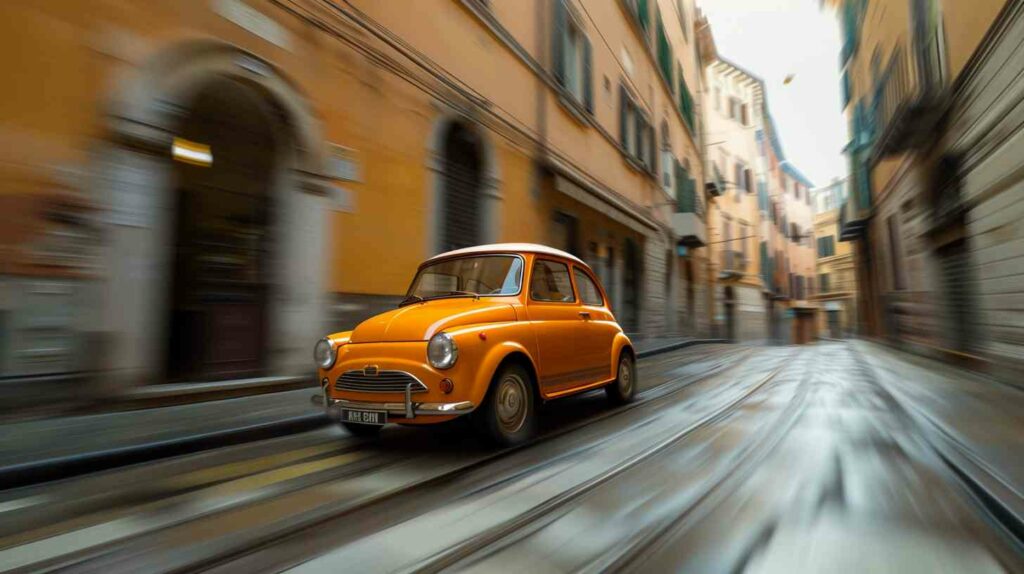
Cultural Impact and Legacy
Popularity and Cultural Impact
The Fiat 500, affectionately known as the “Cinquecento, “wasn’t just a car but a cultural phenomenon that left an indelible mark on Italian society. It became a symbol of post-war recovery, an emblem of Italian ingenuity, and a testament to the nation’s resilience. Its compact size and cheerful design resonated deeply with Italians, making it a common sight in bustling city centres, quiet rural villages, and even the most unexpected corners of the Italian countryside.
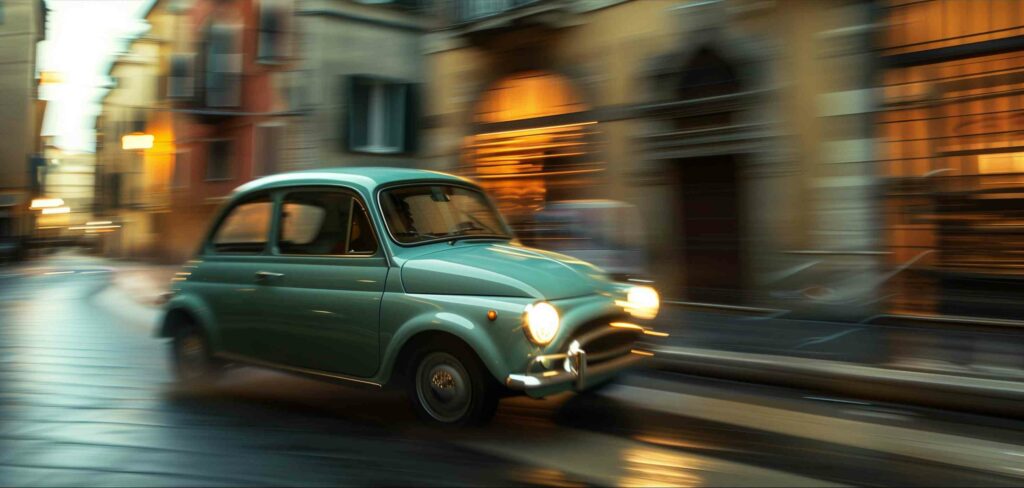
Its influence extended beyond practicality. The 500 appeared in numerous films and TV shows, embedding itself into the cultural fabric. It wasn’t unusual to see a Fiat 500 zipping through Rome’s narrow, winding streets in a classic Italian film, becoming as iconic as the scenery itself. The car’s design and aesthetic became synonymous with Italian style, celebrated for its simplicity and elegance.
The Fiat 500 also became a fixture in art and fashion. Artists and designers drew inspiration from its clean lines and playful character, creating works that paid homage to this little car. Special editions and collaborations, such as the Gucci edition Fiat 500, highlighted its status as a fashion statement as much as a mode of transportation.
Global Influence
While the Fiat 500’s roots were firmly planted in Italian soil, its branches spread far and wide. It found popularity across Europe and beyond and was admired for its practicality, affordability, and distinctive design. In cities like Paris, London, and Berlin, the Fiat 500 became a chic, urban companion, ideally suited to navigating tight spaces and dense traffic.
The influence of the Fiat 500 on the automotive world was profound. It set the standard for small car design, proving that a vehicle could be compact without sacrificing style or functionality. Automakers around the globe took note, and the principles embodied by the 500 can be seen in many small cars that followed.
The car’s enduring popularity is a testament to its timeless appeal. Even decades after the last classic 500 rolled off the assembly line, it remains a beloved icon. Enthusiasts and collectors worldwide cherish these cars, restoring them to their former glory and celebrating their place in automotive history.
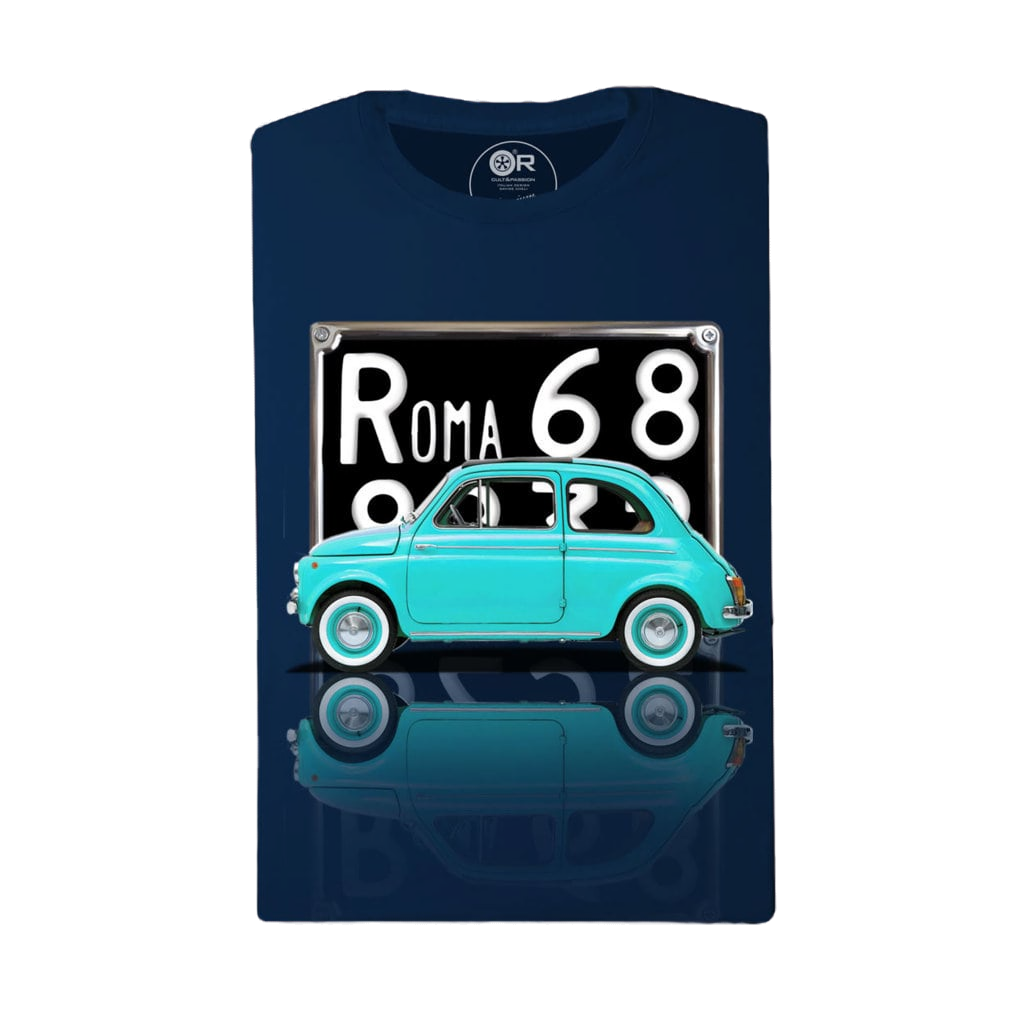
Celebrate the Fiat 500 with this unique T-shirt design
Grab your Fiat 500 t-shirt from Original Race Australia today
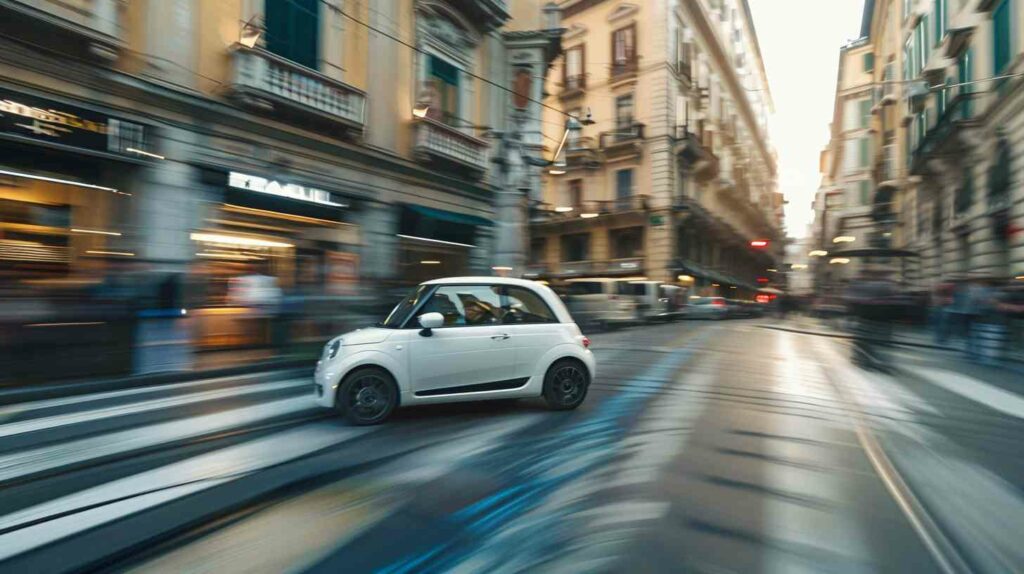
Modern Revival: The New Fiat 500
In 2007, Fiat breathed new life into the 500 with a modern reinterpretation that paid homage to the original while incorporating contemporary design and technology. The new Fiat 500 retained its predecessor’s charming, compact silhouette but came equipped with modern amenities and safety features, appealing to a new generation of drivers. This revival included various models such as the 500C (convertible), 500L (larger, family-oriented), and 500X (crossover SUV), and in 2020, an electric version was introduced, reflecting Fiat’s commitment to sustainability. The new Fiat 500 quickly garnered global acclaim, blending nostalgia with modernity and securing its place in the hearts of car enthusiasts worldwide.
Conclusion
The Fiat 500’s journey from its humble beginnings as the “Topolino” to its modern revival is a story of innovation, resilience, and timeless appeal. Over the decades, it has evolved from a practical solution for post-war Italy into an enduring symbol of Italian design and culture. The Fiat 500 captured the hearts of millions in its homeland and left an indelible mark on the global automotive landscape. Its legacy continues with modern iterations that blend classic charm with contemporary advancements. Whether as a beloved classic or a modern electric vehicle, the Fiat 500 remains a testament to the enduring spirit of innovation and style that defines Italian motoring.

